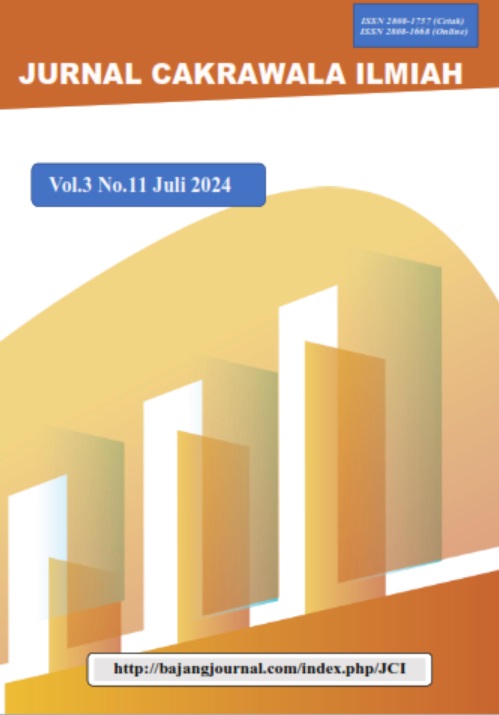BUDAYA ORGANISASI DAN WORKPLACE BULLYING PADA FUNGSIONARIS LEMBAGA KEMAHASISWAAN FAKULTAS PSIKOLOGI UNIVERSITAS KRISTEN SATYA WACANA SALATIGA
Keywords:
Organizational Culture;, Workplace Bullying; Student OrganizationAbstract
Workplace bullying not only occurs in the corporate world but also within student organization. One of the factors influencing workplace bullying is organizational culture. This study aims to examine the relationship between organizational culture and workplace bullying among officials in the Student Organization. This research employs a quantitative approach with a correlational design. The participants in this study are all 62 members of the Student Organization officials in the Faculty of Psychology for the year 2020. The study uses a saturation sampling technique. Data analysis using Spearman's test indicates a correlation value (r) of -0.302 with a significance value of 0.017 (p<0.05), indicating a significant negative relationship between organizational culture and workplace bullying among officials of the Student Organization in the Faculty of Psychology at Satya Wacana Christian University, Salatiga. Based on these data, it can be concluded that the higher or better the organizational culture in the Student Organization of the Faculty of Psychology at Satya Wacana Christian University, the lower the level of workplace bullying that occurs
References
Akella, D. (2016). Workplace bullying: not a manager’s right?. Journal of Workplace Right, 6(1), 1–10.
An, Y., & Kang, J. (2016). Relationship between Organizational Culture and Workplace Bullying among Korean Nurses. Asian nursing research, 10(3), 234–239.
Andriansyah, H dan Sahrah, A. (2014). Hubungan bullying dengan burnout pada karyawan. Jurnal Psikologi Tabularasa 9 (2): 137-150.
Archadia, B.S. (2019). Pengaruh kepribadian, budaya organisasi dan workplace spirituality terhadap perilaku workplace bullying. Skripsi (dipublikasikan). Fakultas Psikologi Universitas Islam Negeri Syarif Hidayatullah.
Arikunto, S. (2019). Prosedur penelitian suatu pendekatan praktik. Rineka Cipta.
Azwar, S. (2012). Penyusunan skala psikologi. Pustaka Pelajar
Cowan, R. L. (2005). “Rocking the boat” and “continuing to fight”: Un/productive justice episodes and the problem of workplace bullying. Human Communication, 12(3), 283–302.
Daft, R.L. (2011). New era of management 10th edition. Thomson South-Western.
Dewi, Y dan Sutarmin. (2019). Pengaruh pendidikan, senioritas, workplace bullying pada kinerja karyawan. Journal Fakultas Ekonomi Universitas Dr. Soetomo 27 (1): 26-35.
Einarsen, S., Hoel, H dan Notelaers, G. (2009). Measuring exposure to bullying and harassment at work: Validity, factor structure, and psychometric properties of the Negatif Acts Questionnaire-revised. Work dan Stress, 23 (1): 24-44.
Einarsen, S., Hoel, H., Zapf, D dan Cooper, C, L. (2011). Bullying and harassment in the workplace. Developments in theory, reseach, and practice (2nd ed). CRC Press Taylor dan Francis Group.
Elewa, A.H dan El Banan, S.H.A. (2019). Organizational culture, organizational trust and workplace bullying among staff nurses at public and private hospitals. International Journal of Nursing Didactics 9 (4): 10-20.
Fekkes, M., Pijpers, F.I.M dan Verloove-Vanhorick, S.P. (2005). Bullying: who does what, when and where? Involvement of children, teachers, and parents in bullying behavior. Health Education Research 20 (1): 81-91
Ghozali, I. (2011). Aplikasi analisis multivariate dengan program IBM SPSS 19. BP Universitas Diponegoro.
Hidayati, L. (2016). Pembulian di tempat kerja dalam konteks asia. Seminar Nasional Dan Gelar Produk: 133–142.
Hoel, H dan Cooper, C. (2000). Destructive conflict and bullying at work. Study Report. University of Manchester Institute of Science and Technology.
Jaafar, M dan Hiidzir, N. I. (2016). Factors of sub-contractor workplace bullying in the construction industry. Research Journal of Fisheries and Hydrobiology 11 (3): 255-260
Jogiyanto, H. M. (2004). Metode penelitian bisnis, salah kaprah dan pengalaman-pengalaman. BPFE.
Krahe, B. (2005). Perilaku agresif. Pustaka Pelajar.
Pabundu, M., (2010). Budaya organisasi dan peningkatan kinerja karyawan. Bumi Aksara.
Park, I dan Cho, E. (2020). The mediating effects in the relationship among
workplace bullying, job stress, and nursing organizational culture after completing the course of ‘workplace bullying prevention law’. Journal of the Korea Academia-Industrial Cooperation Society 21 (5): 523-531.
Putra, A. A dan Rahayuningsih, T. (2017). Validitas konstruk pengukuran perilaku bullying di tempat kerja. Psychopolytan (Jurnal Psikologi) 1 (1): 54–60.
Rivai, V dan Mulyadi, D. (2012). Kepemimpinan dan perilaku organisasi edisi ketiga. PT. Rajagrafindo Persada.
Robbins, S.P. (2006). Perilaku organisasi. PT Indeks Kelompok Gramedia.
Robbins, S.P dan Judge, T.A. (2008). Perilaku organisasi. Salemba Empat.
Rusdi dan Basongan, S. (2018). Budaya organisasi dan perilaku bullying sesama rekan kerja perawat di RSUD I.A Moeis Samarinda: a study komparatif. Jurnal Medika Karya Ilmiah Kesehatan 3 (2): 31-34.
Shangar, R.U dan Yazdanifard, R. (2014). Workplace bullying: boundary for employees and organizational development. Global journal of management and business research: a administration and management 14 (7): 1-9.
Sugiyono. (2011). Metode penelitian kuantitatif, kualitatif dan rdand. Alfabeta.
Sugiyono. (2014). Metode penelitian pendidikan pendekatan kuantitatif, kualitatif, dan RdanD. Alfabeta.
Sullivan, K. (2011). The anti-bullying handbook (2nd ed). Oxford University Press.
Sutrisno, E. (2010). Budaya organisasi. Kencana Prenada Media Group.
Tambur, M dan Vadi, M. (2012). Workplace bullying and organizational culture in a post-transitional country. International Journal of Manpower 33 (7): 754-768.
iyani, A.N. (2012). Save our children from school bullying. Ar Ruzz Media.
Yayasan Semai Jiwa Amini. (2008). Bullying: mengatasi kekerasan di sekolah dan lingkungan sekitar anak. Pustaka Pelajar.
Yeun, Y. R., dan Han, W. J. (2016). Effect of nurses' organizational culture, workplace bullying and work burnout on turnover intention. International Journal of Bio-Science and Bio-Technology 8 (1): 372-380.
Yun, S dan Kang, J. (2018). Influencing factors and consequences of workplace bullying among nurses: a structural equation modeling. Asian Nursing Research 12: 26-33.
Yun, S., Kang, J dan Lee, Y. (2014). Work environment and workplace bullying among korean intensive care unit nurses. Asian Nursing Research 8 (3): 219-225.
Zulganef. (2006). Pemodelan persamaan struktur dan aplikasinya menggunakan amos 5. Penerbit Pustaka
Downloads
Published
How to Cite
Issue
Section
License
Copyright (c) 2024 Jurnal Cakrawala Ilmiah

This work is licensed under a Creative Commons Attribution-NonCommercial 4.0 International License.
















